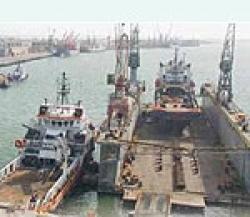
Published date
16 August 1993
Location: back to this day in history search archive
Walvis Bay, from the Dutch for "Whale Bay", is situated in Namibia, along the west coast of southern Africa, formerly the German colony of South- West Africa. According to archaeological finds, the area was home to groups of Khoikhoi (Topnaars) and Aoni, who had lived in the area for thousands of years.
This area was first visited by European explorers in 1485, when Portuguese explorer Diogo Cao visited the nearby Cape Cross. In 1487, Bartholomew Diaz anchored in the bay and called it Golfo de Santa Maria de Conceicao.
The bay, which was also known as "Woolwich Bay" and "Walwich Bay" was visited occasionally by sealers and whalers before being established as a commercial port. In 1506, the Portuguese navigator Pacheco Pereira described the area as "a shallow bay teeming with fish of all kinds, including whales".
Walvis Bay, because of its abundance of fishing resources, has since been home to an economically significant loading port for fisheries, as well as mining materials. Because of its strategic position, ownership of the area has been contested, and the area has been under Dutch, British, German and South African control respectively since the late 1700s.
On 16 August 1993, South Africa relinquished sovereignty over Walvis Bay to Namibia, even though Namibia had gained independence three years earlier in 1990. In March 1994, Walvis Bay was officially handed over to the Namibian government, after eighty four years of South African control.
References
Kalley, J.A.; Schoeman, E. & Andor, L.E. (eds)(1999) Southern African Political History: a chronology of key political events from independence to mid-1997. Westport: Greenwood| Potgieter, D.J. et al. (eds)(1970) Standard Encyclopaedia of Southern Africa. Cape Town: NASOU. v. 11, p. 313-15.">